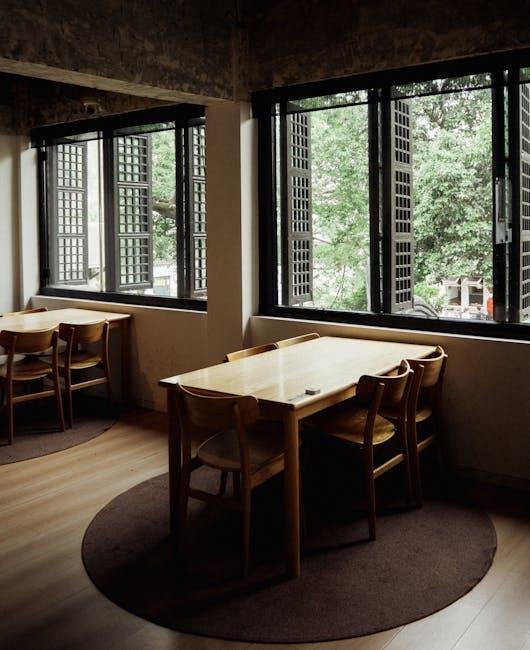In contemporary design discourse, few trends have sparked as much debate as the open concept layout. Once heralded as the pinnacle of modern living, promising spontaneous family interactions and an airy, spacious feel, this design ideology has faced its fair share of scrutiny in the years since its meteoric rise. As we peel back the layers of this architectural phenomenon, we find ourselves grappling with questions that transcend mere aesthetics: Does an open concept truly foster harmony and connection, or does it compromise privacy and individuality within our homes? This article seeks to explore the nuances of open concept living, evaluating its benefits and drawbacks, and ultimately asking: Is it worth it? Join us as we navigate the intricacies of this design choice, illuminating perspectives that may either reinforce your enthusiasm for open spaces or inspire a rethinking of your home layout.
Exploring the Allure of Open Concept Designs
Open concept designs continue to captivate homeowners and architects alike, striking a harmonious balance between aesthetics and functionality.By removing walls that traditionally divide living spaces, these layouts create an expansive atmosphere that encourages social interaction. Key benefits of open concept designs include:
- Enhanced natural light that brightens the entire area
- A sense of connection between various areas, making entertaining easier
- Flexible furniture arrangements that can adapt to diverse activities
However, the allure of open concepts isn’t without its challenges.Noise levels can escalate without the buffer of closed rooms, and the lack of privacy may deter some buyers. Moreover, maintaining a cohesive design can be tricky, as this layout requires careful planning to unify different spaces visually. A comparative overview illustrates both sides:
| Pros | Cons |
|---|---|
| Spacious feel | Potential for noise issues |
| Social interaction encouraged | Lack of privacy |
| Improved airflow and light | Design cohesion required |

The Practical benefits of Open Spaces in Modern Living
Open spaces in modern living environments offer numerous practical benefits that enhance the quality of life for residents. One of the standout advantages is the enhanced natural light that floods through larger windows and open layouts. This not only contributes to an uplifting atmosphere but also promotes an energy-efficient lifestyle. With fewer walls to obstruct light,homes become brighter and more inviting,reducing the reliance on artificial lighting during the day. Furthermore, the seamless flow between different areas boosts social connectivity, making it easier for families and friends to interact, irrespective of where they’re stationed within the space.
Additionally, the integration of open spaces facilitates flexible usage. This adaptability allows homeowners to reorganize spaces according to their changing needs, weather it’s hosting gatherings or simply enjoying a cozy night in with loved ones.Consider the following benefits of having an open concept layout:
- Increased Space Perception: The absence of barriers creates an illusion of a larger area.
- Improved Airflow: Open designs encourage better air circulation throughout the home.
- Seamless Multitasking: Cooking, dining, and entertaining become part of one continuous experience.
| Benefit | Description |
|---|---|
| Natural Ventilation | Promotes healthy air circulation, reducing humidity and allergens. |
| Visual Cohesion | Creates a style continuity, enhancing the aesthetic appeal. |
| Increased Property value | Open layouts are often sought after, enhancing home marketability. |

Challenges and Considerations in Open Concept Layouts
While open concept layouts can promote a sense of connection and unity throughout a space, they are not without their drawbacks. Homeowners must consider acoustic challenges, as sound can easily travel from one area to another, perhaps disrupting activities such as watching television or entertaining guests. Privacy concerns arise as well, especially in households where multiple members are engaged in different activities simultaneously. Factors to weigh include:
- Noise Level: The absence of walls can lead to increased noise.
- Temperature Control: Open areas may struggle with heating and cooling efficiency.
- Defined Spaces: Lack of separation can make it hard to delineate social and private areas.
Furthermore, design and decor choices must be made with care. An open concept space can easily feel chaotic if not arranged thoughtfully. Considerations about how to create distinct zones for various functions—such as cooking, dining, and lounging—become essential. Homeowners might also find it challenging to maintain coherence in style,which can lead to a clash of aesthetics. Possible solutions include:
- Strategic Furniture Placement: use furniture to create natural boundaries.
- Area rugs: Define spaces and add warmth.
- Color Schemes: Use cohesive color palettes to tie the rooms together.

Making the Decision: Tips for Embracing or Avoiding Open Concepts
Deciding whether to embrace or avoid an open concept layout involves careful consideration of your lifestyle and preferences.Here are some aspects to ponder:
- Space Utilization: Consider how effectively you use your space. Open concepts can enhance flow and openness, but may limit defined areas for specific activities.
- Social Dynamics: Reflect on your social habits. If you enjoy entertaining guests and engaging with family while cooking, an open layout may foster these interactions.
- Noise Control: Think about the level of noise you’re pleasant with. Open concepts can amplify sounds from different areas, so assess how that may affect day-to-day living.
Alternatively, some find comfort in more segmented spaces. evaluate these points:
- Privacy Needs: If you value quiet and personal space, customary layouts might be more in line with your needs.
- Design Flexibility: closed-off rooms allow for diverse color schemes and furniture arrangements, catering to varied tastes and lifestyles.
- Climate control: It’s often easier to keep specific areas warm or cool in a closed space, so consider how you manage temperature in your home.
Final Thoughts
As we close the chapter on the open concept layout debate,it’s clear that this design choice elicits strong feelings on both sides. Whether you’re captivated by the promise of vast, airy spaces or concerned about the potential for noise and chaos, the value of an open concept home ultimately comes down to personal preference and lifestyle. Weighing the pros and cons is essential, as this layout can enhance your living experience or challenge it, depending on your needs and priorities. As you embark on your own journey to create a space that reflects who you are, remember that the most importent factor is finding the layout that brings you joy and comfort. So, whether you embrace the openness or lean towards traditional boundaries, may your home be a true reflection of your unique style—one that serves not just as shelter, but as a sanctuary of well-being.



